Whether you are a classroom teacher, a homeschooler or a parent with kids at home, you can spark your child’s interest and inspire them to investigate the world around them through simple changes to your environment. As part of our series on designing intentional learning spaces, I will share how I have designed our space for learning in our home without a dedicated schoolroom. I will highlight ways to encourage intentional learning, creativity and independence through a few basic design qualities I have learned through my years as an educator. So far we have covered spaces for reading, writing and creativity. Today’s post will highlight how we encourage discovery in our home.
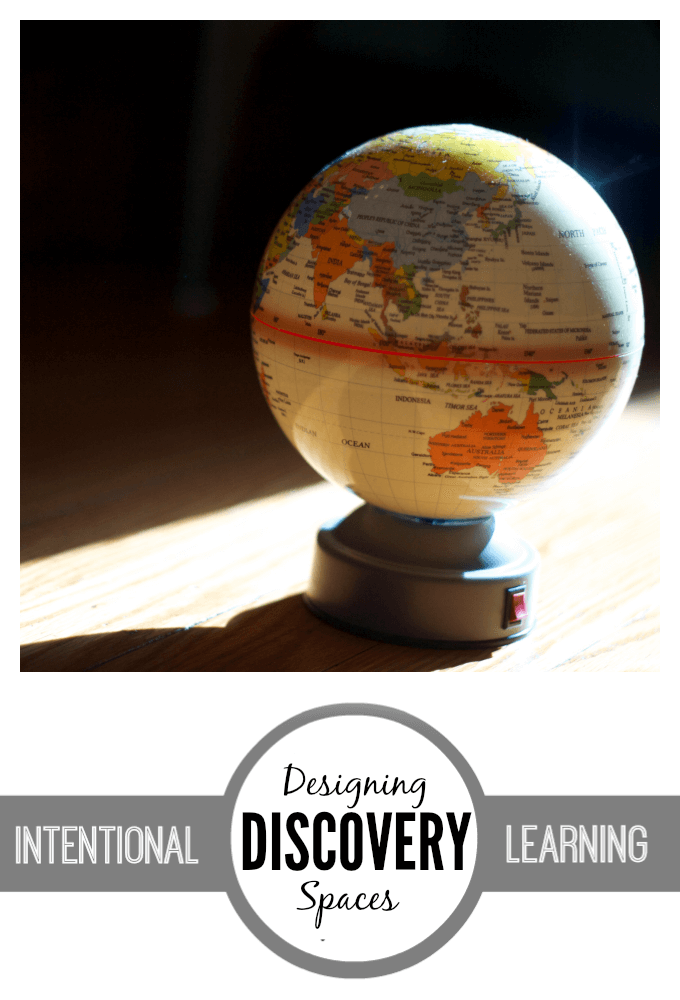
{THIS POST MAY CONTAIN AFFILIATE LINKS TO MATERIALS I RECOMMEND. ANYTHING YOU PURCHASE THROUGH THESE LINKS HELPS SUPPORT LEMON LIME ADVENTURES. THANK YOU IN ADVANCE FOR CHOOSING TO SUPPORT US.}
It is my goal to share what I have learned in my years as an educator, both in the classroom and at home. I want to be transparent. I am not a designer. I have not had any formal training is design. While my philosophy matches that of Reggio Emilia and Montessori, I have not been trained in either teaching method. I believe in the environment as a third teacher and that children are encouraged to spark their curiosity and intellect when they are presented with well designed spaces.
THOUGHTS ABOUT DESIGNING A DISCOVERY SPACE
According to the Reggio philosophy, at the heart of every child is a curious and inquisitive spirit. The idea is that they are not merely empty vessels waiting to be filled with facts, memorized dates, and information. Instead, they are ready and willing to use their curiosity to explore their environment and make understand as they manipulate things around them. However in order to do this, children need to be surrounded with opportunities to explore and invitations to discover new things.
Similar to the reading and writing areas I already shared, a discovery area can be intertwined into your environment with or without a dedicated space. In our home you will find “invitations” for discovery in every room of the house and in our backyard. These areas are forever changing and always fluid. In the classroom, these areas were through the various centers and were based on current curriculum goals and student interests.
Designing a discovery space that is flexible yet intent with purpose will allow children to open the doors to discovery and ignite that innate curiosity. When designing your space for discovery, start by thinking of the child’s interest, goals and current understandings. Allow your child’s natural curiosities to guide your curriculum and material choices.
DESIGNING YOUR DISCOVERY SPACE FOR INTENTIONAL LEARNING
During each part of this series, I plan to share 4 simple steps to developing an intentional learning space. To learn more about general practices and my philosophy of education, you can read more on the landing page.
SIMPLIFY YOUR DISCOVERY SPACE
When you think of the word discovery, what comes to mind? Is it a science center with magnifying glasses and test tubes? Is it a simple shelf with new materials? For us, discovery is something we promote throughout our house. It embodies our philosophy of learning and life, as we believe that life is full of opportunities to explore and discover if you take the time to find interest in the things around you. That means discovering the way a new toy works, exploring found objects, investigating a new world, reading about a famous person in history, and learning new math concepts. Although a discovery space can be anywhere in your home or classroom, you can create the desire and interest in children by being intent and purposeful in your space.
When you begin to create your space for discovery, the first step (as I have previously suggested) is to de-clutter and simplify. When a space is free of clutter and free of distractions, it focuses a child’s attention on what is important and helps them filter out what materials you are encouraging them to explore and discover. This can be done with one spot, one shelf, or throughout your home or classroom. The principles of discovery are the same regardless of the amount of space you have to work with.
In our home this means, using open shelves and discovery trays that can be moved and manipulated. Sometimes this means creating a discovery area outdoors or on the kitchen table while the children are away. The key is being organized and prepared before presenting this space to the children. When creating spaces for discovery, I love to live by the adage “less is more”.
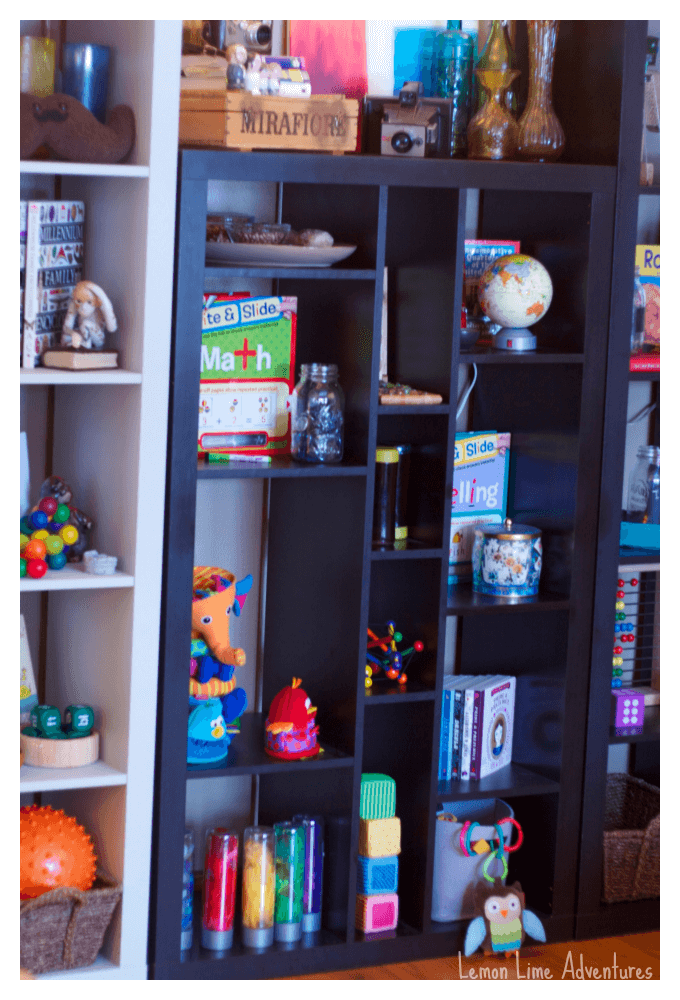
Materials Needed to Simplify Your Discovery Space:
- Open Shelves
- Baskets
- Trays
- Bowls
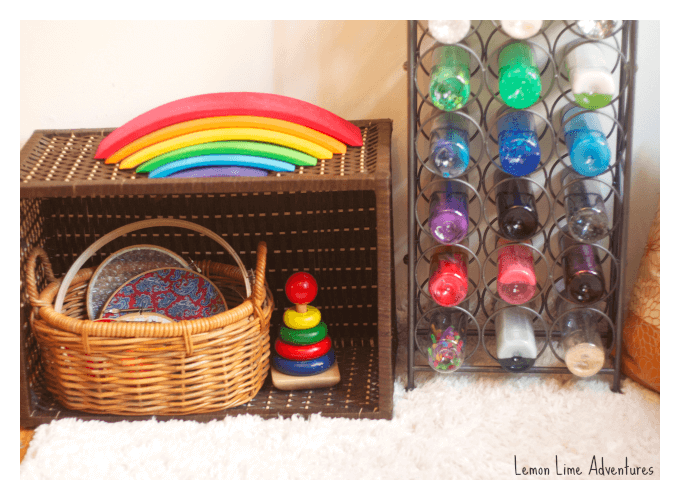
Discovery does not have to be limited to older children. In fact, from a very young age, you can begin to foster the curiosity of children by creating spaces that are inviting, interesting and full of opportunities to discover new things.
CURATE MATERIALS FOR YOUR DISCOVERY SPACE
Materials are a key factor in your discovery areas. From the materials meant for exploring and investigating to the materials used as tools… the materials play an integral role in the development of a curious mind. That is not to say that materials need to cost money, be lavish or flashy. In fact, some of the best materials are every day objects, items from nature and materials that are simple in design but intriguing in form.
When choosing materials for your discovery area, I encourage you to start with current interests of a child. Plan how the materials could be used but be flexible with the direction the children choose to take the investigations. According to the Reggio Approach, it is the role of the teacher to facilitate and assist children in their learning, not to dictate or manipulate all of the learning experiences. Choosing materials that encourage independence will allow you, the teacher, to take a passive role and let the child take the lead.
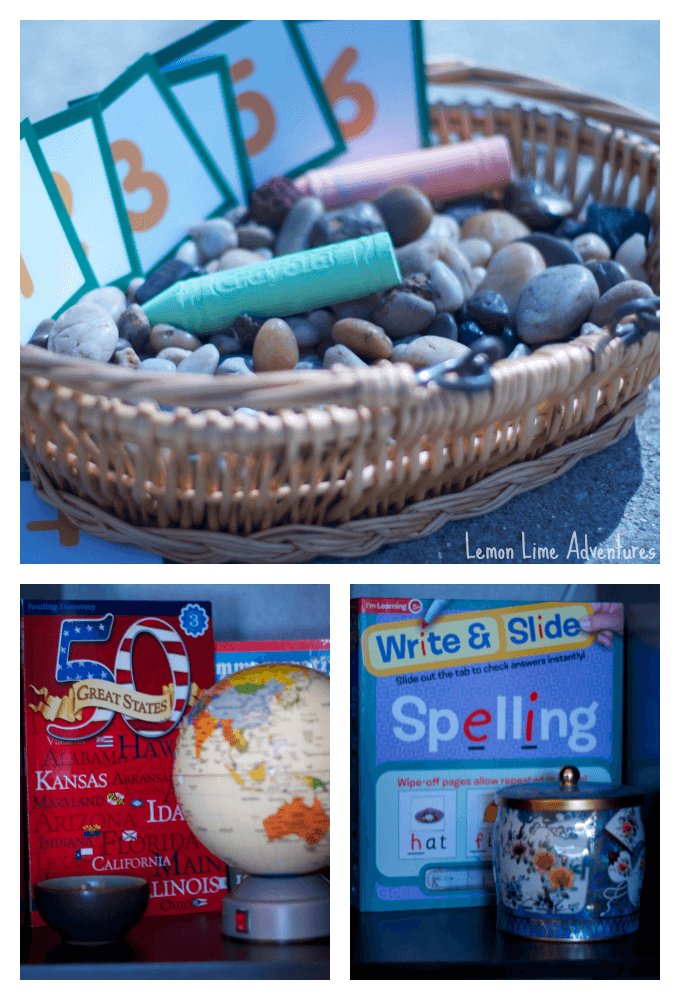
Things to consider when choosing your materials:
- What are the ages of the children?
- What is the traffic of the space?
- How will materials be moved and manipulated?
- What materials can be used independently and what needs adult facilitation?
- What are some curriculum or developmental goals you would like to accomplish?
- How will you document learning?
- How will children document their learning?
Materials for Your Discovery Space:
- Items from Nature
- Realia (Real Life Replicas of Items from a Specific Subject Matter)
- Objects/Life Forms (plants, bugs, small animals, worms)
- Materials for Counting and Math Concepts
- Materials for Building
- Items for Tinkering
- Discovery Bottles
- Puzzles
- Books
The possibilities are endless, as discovery can cover all ages, interest topics, and age ranges. These are simply just a few ideas to get you started.
INVITE LEARNERS TO DISCOVER
Loading a discovery area or the environment with tools for discovering doesn’t necessarily encourage
You can begin by creating a space
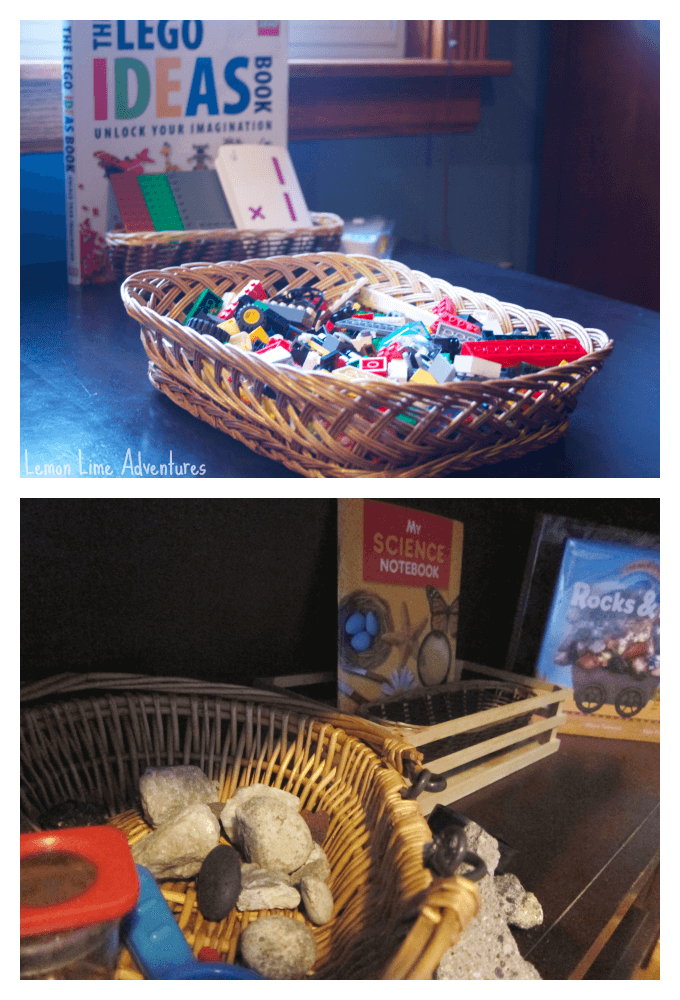
Materials to Make Your Discovery Space Inviting:
- Magnifying Glasses
- Tweezers
- Collection Cups
- Real Life Pictures and Images
- Blank Books
- Journals
- Child Cameras
- Felt Tip Pens for Documentation
Tips to Making Learning Inviting:
- Try arranging your items in an appealing and beautiful set up
- Attempt to mimic curiosity by adding 1-2 collection materials with the discovery area
- Keep the area free of clutter
- Provide picture cards with instructions or sample ideas
FACILITATE A LOVE OF DISCOVERY
As I have mentioned before, having amazing materials and creating an environment that encourages …..You could find yourself frustrated and feeling like all of it was not worth your time. It is incredibly important to scaffold the area so that all of the children can use the area, however it is okay to strategically model how to use some or all of the materials.
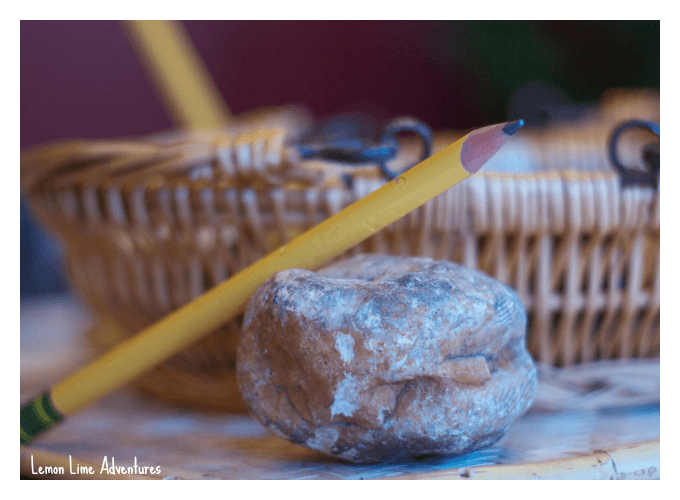
Simple Ideas for Facilitating Discovery:
- Allow children time to explore each material independently, without a purpose
- Start with only one new material at a time
- Model ways to use the materials
- Create joint projects
- Research and study cultures and places in the world different than your own
INTENTIONAL LEARNING SPACES RESOURCES
As I mentioned before, this post is only a tiny slice of a larger series on learning spaces. I hope you will stick around and check out the series. Each day, I will share a different area of focus from reading to sensory.
How do you plan for intentional learning in your writing space? I would love to hear and see pictures! Please come connect with me on Facebook, Twitter, Google+, Pinterest, Instagram or subscribe by email so you don’t miss what comes next in the Intentional Design Series!


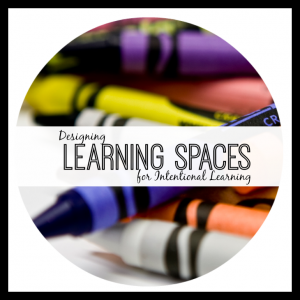






Where did you get the dark colored bookshelf with all the different sizes of spaces? I’ve never seen anything like it, and it’s amazing!
Thanks for this blog. I found it through a link to your “8 things kids should know about science” post.
I am so happy you love it here! We got the shelf from IKEA. 🙂
Your use of the winerack is soo clever!!
Thank you so much! My 14 month old actually gave me the idea 🙂